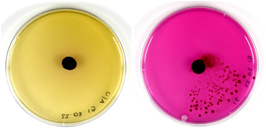Potential of fungi to produce biosandstone
DOI:
https://doi.org/10.21809/rilemtechlett.2020.119Keywords:
Bioconcrete; Microbiologically Induced Calcium Carbonate Precipitation (MICCP); Sustainable Solution; Fungi; EcomaterialAbstract
Over the last decade, microbial induced calcium carbonate precipitation (MICCP) has been used in several types of research due to its potential in applications for the areas of construction materials and geotechnics. Biotechnology into the area of building materials, has enabled the development of the so-called biomaterials of construction produced through biomineralization. Most of the biocementation studies to make biosandstones, biobricks or to promote bio self-healing on concrete present bacteria as the microorganisms responsible for the CaCO3 induction process. Fungi are potentially better for the biocementation process because they have more biomass and some develop filaments that can be used as microfibers on materials. Thus, the present work proposes the development of a methodology to analyse the potential use of two urease-positive fungi (Penicillium chrysogenum MUM 9743 and Neurospora crassa MUM 9208) to produce biosandstone. The microstructure and chemical constituents of biocrystals formed due to MICCP were observed under Scanning Electron Microscopy (SEM). SEM showed fungal mycelia as bio-based fibre in biosandstone and clusters of probable calcite crystals on and around mycelia. Despite the resistance obtained was up to 50-66 kPa until now, both fungi were able to promote biocementation of sand. More research is needed to increase the material resistance up to 1-2 MPa that is required for these building materials.

Downloads
Published
How to Cite
Issue
Section
License
Authors retain copyright of the articles published in RILEM Technical Letters and grant the journal the right of first publication with open access. The work is simultaneously licensed under Creative Commons Attribution 4.0 International License (CC BY 4.0) that allows others to share and adapt the work under the following terms: 1) a proper attribution is given in a form of bibliographic record with the DOI link directing to RILEM Technical Letters; 2) a link to the license is provided; 3) the changes (if any) are indicated.









